The Supplement Game: Are You In It?
THE SUPPLEMENT GAME: ARE YOU IN IT? (ISSUE 84)
By Diane Gold
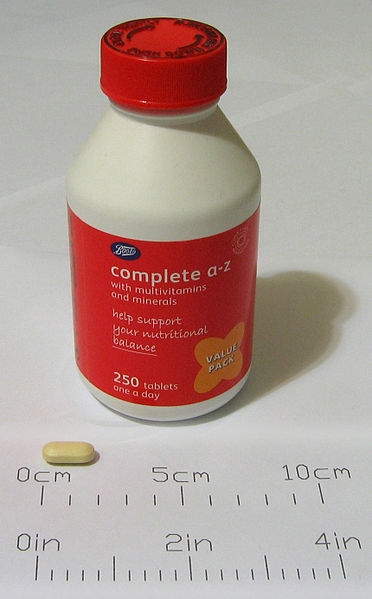 The Supplement Game is big in 2013, to the tune of over $60 Billion in total. There’s a supplement for every ache in our body, every ache in our mind and every blemish that plants itself on our body’s largest and only external organ, the skin. We are groomed from an early age to take our vitamins. In case this concept hasn’t been explored, it is a part of consumerism that is made into a habit at a very young age: daily vitamins caps.
The Supplement Game is big in 2013, to the tune of over $60 Billion in total. There’s a supplement for every ache in our body, every ache in our mind and every blemish that plants itself on our body’s largest and only external organ, the skin. We are groomed from an early age to take our vitamins. In case this concept hasn’t been explored, it is a part of consumerism that is made into a habit at a very young age: daily vitamins caps.
We are taught the daily amounts of these vitamins that we should look for on a bottle so that we know we are getting the right amount. There are two flaws with this thinking and with having one universal measurement:
1) each body requires more or less depending upon our activity, our entire make-up, our diet and our genetics.
2) the “right amount” from the Department of Agriculture’s Food And Nutrition Board at the Institute Of Medicine at the National Academy of Science is often not what health professionals recommend.
The truth is we should be eating our vitamins and minerals, not taking them. Instead of being taught the combinations of foods that supply this nutrition, we get into the habit of taking a pill or a powder instead of the right foods.
WHEN SUPPLEMENTS EMPOWER
Let me clarify here that supplements can empower our lives:
1) when we don’t have the time to combine our foods perfectly, meaning it is more convenient to take a supplement than it is to search for a food to get the same vitamin or mineral.
2) while we are learning to combine foods well.
3) when we don’t have the money to obtain the perfect foods.
4) when our bodies require an extra boost.
5) when we have a deficiency that supplements can address quickly.
But food is the best source of our nutrition, by far.
I am the first to admit that I take vitamins and minerals. My goal is to get what I need from food, but I am still working on it. And I may end up choosing some supplements that are too inconvenient to get from food.
When did I begin with supplements? Four and a half years ago. Before that, I was eating what I wanted, not paying close attention to the right way to eat. Yes, I was a vegetarian for 40 years, so I didn’t ingest meat, fowl or fish. I did, however, eat lots of dairy and not enough green leafy vegetables. I did not get into the supplement game until age 60.
Even when my children were young and living with me, I did not do enough research to make certain their meals were balanced. I approximated and gave them vitamins.
So, several years ago, I took up an interest in food. I went from four-decade vegetarian to vegan in a flash, but still not a conscientious vegan. I was in it for the animals first, health, not yet. I ate packaged protein made from textured vegetable protein, which, I now know, is processed under high heat, which removes many nutrients and renders others useless.
There are also two substances that form in processing, nitrites during spray-drying and lysinoate during alkaline processing, according to the savvy vegetarian, Judith Kingbury.
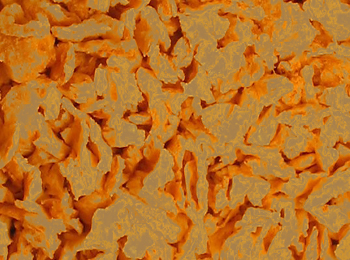 Plus, almost all the soy protein isolate, as it is usually listed in the ingredient section, is genetically modified, with many studies showing this process is detrimental to our health.
Plus, almost all the soy protein isolate, as it is usually listed in the ingredient section, is genetically modified, with many studies showing this process is detrimental to our health.
The thrill that the Chinese Restaurant down the block had a complete vegetarian menu started to wane when I realized that their fake shrimp, chicken, duck were made from this processed food that sometimes produced carcinogenic nitrites and more. The idea of shaping the food into animal shapes did not mesh with my thinking. If we chose to protect animals by not eating them, why would we be happy to pretend to eat them?
Anyway, the new information that this stuff was bad for me helped get me on the bandwagon of eating almost no processed foods.
BACK TO THE HABIT
 Let’s get back to how we get into the supplement game. We begin our journey being treated by doctors who do not have to take nutrition in school although some medical schools offer one class. We were schooled at places that offered us a choice between cardboard pizza, a processed cheese sandwich or an unidentified institutional meat with a few pieces of iceberg lettuce topped with two shreds of carrot and three shreds of red cabbage. Oh, yes, and milk, which has been proven to turn cancer on and off in rats (T. Colin Campbell’s The China Study).
Let’s get back to how we get into the supplement game. We begin our journey being treated by doctors who do not have to take nutrition in school although some medical schools offer one class. We were schooled at places that offered us a choice between cardboard pizza, a processed cheese sandwich or an unidentified institutional meat with a few pieces of iceberg lettuce topped with two shreds of carrot and three shreds of red cabbage. Oh, yes, and milk, which has been proven to turn cancer on and off in rats (T. Colin Campbell’s The China Study).
As of the year 2000, kids are learning much better nutrition in school. At home, though, most families do not have necessary knowledge about nutrition. The Healthy, Hunger-Free Kids Act, directed the USDA’s National School Lunch Program to update its nutrition to current standards which means more fruits, veggies and grains, less sodium and calorie limitation. There is still, however, a lack of strategy on how to eat well on a normal person’s budget, but teachers are more conscientious about teaching and principals are fighting harder to get better food (with the community’s help). Still, the meat and dairy industries supply schools with most of the food that is sold to the USDA as surplus. It is not the kind of food one would choose if one were selecting good quality food for one’s child, but it passes the standard which is made up for cost, not health.
CONCLUSION
It is our responsibility to teach our family good habits. It is important to know how to eat without supplements and to strive toward removing supplements from any menu. They serve the purpose of security, maintaining our ingrained habit, allow us not to learn well what to eat, give us peace of mind even though they may not be helping us. They are a quick fix that slows down our learning curve.
When we feel tired, we can have some caffeine, an energy drink or an energy bar. This type of solution is not sustainable.
When our bones get soft as we get older, we take calcium. Ca
Does it get absorbed from the supplement or are we wasting our time and money? I often wonder whether the calcium and vitamin D I take are absorbed at all. Ask the doctor? I barely get five minutes per appointment. I have asked how we can test for supplement absorption, other than blood levels of these substances, which don’t track the supplement and bone density tests. I’ll ask again.
When we have pain in the back, we take glucosamine and get a massage. For neuropathy, Vitamin Bs and alpha-lipoic acid (Dr. Weil’s recommendation). It is true that when pain is involved, we are ready to use anything that works. And we prefer supplements to drugs. So we run to use whatever the latest and greatest fix is, be it a powdered mushroom or Vitamin E for the skin.
 Why not just eat a mushroom and get that potassium, copper, selenium, vitamin B and protein?
Why not just eat a mushroom and get that potassium, copper, selenium, vitamin B and protein?
We continue to take that one-a-day vitamin set which should be obtained from our food. The idea of external to food vitamins is so ingrained in us that we will have to make a concerted effort to learn to eat the right food.
ACTION STEPS
CAUTION
Because many of us have supplement habits, it would be best to consult with your doctor before making a change. However, understand that doctors may push supplements the way they prescribe drugs. Give this some thought before taking any action and understand the place from which the answer comes. Maybe I should say consult a food advisor who has training in nutrition. But who can afford that since it’s usually not insurance reimbursed?
1) Consider weaning off vitamins and minerals. This means we have to be responsible for our own food, so we may really fight this. First skip every third day. Then every second day. Hold it, there, for a month to make sure you are eating well enough. Once you realize that you are, continue weaning. Confirming through before and after blood tests is always a good option.
2) Eat one extra green leafy vegetable serving per day.
3) Learn one new food fact per day. These facts, obviously, will accumulate, so writing them down works well.
4) Research a food replacement for one supplement a month.
5) See how you feel with the reduction of supplements, and tell a friend.

____________________________________________________________________
FEEDBACK
Please leave a comment and LIKE.
DIANE GOLD, AUTHOR
Diane Gold, Founder of Warriors of Weight, Turning Habits Into Health, is a mentor in tai chi, kung fu and meditation, a music, fitness and stress expert, dedicated mom, studying plant-based nutrition.
She considers taking supplements somehow cheating because the real way to get nutrition is from eating it. She says,
“This is a great opportunity to start studying what foods are good for us and why. We get into the supplement game at an early age, or we are taught the merits of supplements, at least. Let us study how to eat our nutrition through food, slowly remove supplements from our daily intake and let us pass this on to family, friends and future generations.”

 When we go to a medical professional for wellness or sickness services, we start to build habits. We learn that it is important to trust the doctor with both the body and the mind, or that’s how it was in the 1960s when I was young. We were taught we had to trust this person of medicine to care about us and that we could talk to them about anything that bothered us, even emotional issues.
When we go to a medical professional for wellness or sickness services, we start to build habits. We learn that it is important to trust the doctor with both the body and the mind, or that’s how it was in the 1960s when I was young. We were taught we had to trust this person of medicine to care about us and that we could talk to them about anything that bothered us, even emotional issues. Note that I am using the term doctor to mean the individual each of us has chosen to be our primary health care provider. Personally, I’m still looking.
Note that I am using the term doctor to mean the individual each of us has chosen to be our primary health care provider. Personally, I’m still looking.
 Next I received an invoice for $466. This was quite different from the $00.00 I had been told I would have to pay.
Next I received an invoice for $466. This was quite different from the $00.00 I had been told I would have to pay. There is only one step:
There is only one step: An MIT study last October at the McGovern Institute For Brain Research, authored by Kyle Smith, Ann Graybiel, et al, showed how rats continued their learned habitual behavior even when their reward was removed.
An MIT study last October at the McGovern Institute For Brain Research, authored by Kyle Smith, Ann Graybiel, et al, showed how rats continued their learned habitual behavior even when their reward was removed. Often times, we put tremendous value on what we do. If we write, we believe our writing helps the readership. If we compose, we are enamored with our own work. If we teach, we think we are the best. If we are fighters, we believe we are the best.
Often times, we put tremendous value on what we do. If we write, we believe our writing helps the readership. If we compose, we are enamored with our own work. If we teach, we think we are the best. If we are fighters, we believe we are the best. 2) PASSING JUDGMENT
2) PASSING JUDGMENT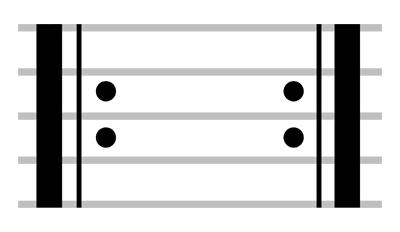 In order for these action steps to take shape, we must repeat them over and over, each time we have the opportunity. The idea is to change the habit of inflexible mind we have instilled in ourselves, and instill a new one, the habit of flexible mind. It requires self-mind training, as with any habit!
In order for these action steps to take shape, we must repeat them over and over, each time we have the opportunity. The idea is to change the habit of inflexible mind we have instilled in ourselves, and instill a new one, the habit of flexible mind. It requires self-mind training, as with any habit! Have a question about a habit, nutrition, plant-based nutrition, tai chi, music, parenting, life? Ask here and, if we don’t know the answer, we will ask our qualified panelists and professional colleagues to help get you your answer.
Have a question about a habit, nutrition, plant-based nutrition, tai chi, music, parenting, life? Ask here and, if we don’t know the answer, we will ask our qualified panelists and professional colleagues to help get you your answer. For years, we have been ingesting food that has been modified to yield bigger crop, faster growth, more eye-appealing shape, resist or repel certain insect infestation and more.
For years, we have been ingesting food that has been modified to yield bigger crop, faster growth, more eye-appealing shape, resist or repel certain insect infestation and more. Of course, governments are corporations. They deal with other corporations. When one corporation does a business deal with another, a purchase or transaction is made.
Of course, governments are corporations. They deal with other corporations. When one corporation does a business deal with another, a purchase or transaction is made. 1.
1.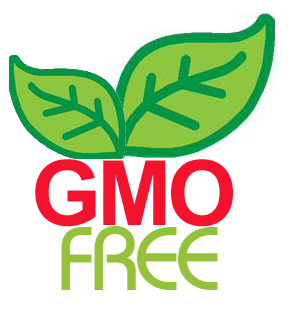
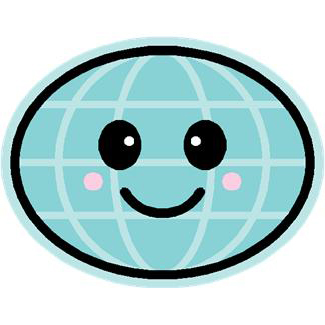 Old habits die hard. Now that our eyes are opening, and many of us are aware of the uncertainties of consuming GMOs, let’s work on changing our habit of consuming without asking. Let’s be diligent so that we can create healthier habits to pass on to our children and to theirs. The more of us who require non-GMO food, the less expensive it will be to certify it as “non-GMO” by label on a package or bushel of produce.
Old habits die hard. Now that our eyes are opening, and many of us are aware of the uncertainties of consuming GMOs, let’s work on changing our habit of consuming without asking. Let’s be diligent so that we can create healthier habits to pass on to our children and to theirs. The more of us who require non-GMO food, the less expensive it will be to certify it as “non-GMO” by label on a package or bushel of produce. When our children come home cursing, speak hurtfully about others, prefer greed to sharing, tell half truths instead of trusting us, and don’t consider that knowledge is freedom; we had better look in the mirror and do something now.
When our children come home cursing, speak hurtfully about others, prefer greed to sharing, tell half truths instead of trusting us, and don’t consider that knowledge is freedom; we had better look in the mirror and do something now. There is nothing more important than engaging with our children. How secure they feel can be based upon a simple genuine interaction on our part. That moment we listened even though we had other responsibilities could have made the difference between the apathetic student and the person who thrives.
There is nothing more important than engaging with our children. How secure they feel can be based upon a simple genuine interaction on our part. That moment we listened even though we had other responsibilities could have made the difference between the apathetic student and the person who thrives. 6)
6)
 The grade game refers to the habit of using grades to determine success in education. This measurement system is known all over the world. How often does it work?
The grade game refers to the habit of using grades to determine success in education. This measurement system is known all over the world. How often does it work? I read an article by Michael Thomsen, “The Case Against Grades,” at Slate.com the other day. In it, he supports the trend moving away from grades in school. He talks about the “negative reinforcement” that comes from this type of system. Having been a specialty teacher for 10 years in the New York City and State School Systems, and a private teacher for another several decades, I have first-hand experience at watching students and serving their differences.
I read an article by Michael Thomsen, “The Case Against Grades,” at Slate.com the other day. In it, he supports the trend moving away from grades in school. He talks about the “negative reinforcement” that comes from this type of system. Having been a specialty teacher for 10 years in the New York City and State School Systems, and a private teacher for another several decades, I have first-hand experience at watching students and serving their differences. 1) Children cut school for fear of failing a test.
1) Children cut school for fear of failing a test.
 Placing children in a molded system that does not embellish their interests and their strengths represses their creativity, curbs their intelligence, crushes their self-worth and perpetuates a system that needs change. Having a system that is evolutionary in nature and is not framed around “the grading game” seems fresh, logical, sensible and
Placing children in a molded system that does not embellish their interests and their strengths represses their creativity, curbs their intelligence, crushes their self-worth and perpetuates a system that needs change. Having a system that is evolutionary in nature and is not framed around “the grading game” seems fresh, logical, sensible and
 The protein myth has to do with combining proteins so as to consume all essential amino acids (the 9 that the body does not produce), the building blocks of protein, in 1 sitting. This concept was promoted in the 70s but was repudiated 10 years later as false and misleading.
The protein myth has to do with combining proteins so as to consume all essential amino acids (the 9 that the body does not produce), the building blocks of protein, in 1 sitting. This concept was promoted in the 70s but was repudiated 10 years later as false and misleading.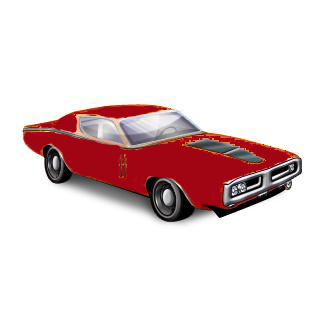 Funny how habits stick with us so naturally. Think about before you knew how to ride a bike. Hard to recall because once we know, the steps to riding are ingrained in our head. For those of us who ride, there was a time when we didn’t. Now, it is second nature and never forgotten once learned. Take driving a car. The reflexes and reactions we use to accomplish safe driving are habits ingrained in that come back quickly if we put them down.
Funny how habits stick with us so naturally. Think about before you knew how to ride a bike. Hard to recall because once we know, the steps to riding are ingrained in our head. For those of us who ride, there was a time when we didn’t. Now, it is second nature and never forgotten once learned. Take driving a car. The reflexes and reactions we use to accomplish safe driving are habits ingrained in that come back quickly if we put them down. There are nebulous references all over current nutritional literature that talk about complete and incomplete protein. This is, in part, because many dieticians and nutritionists learn from books that still promote this combining idea or the superiority of a meat diet over a plant-based diet.
There are nebulous references all over current nutritional literature that talk about complete and incomplete protein. This is, in part, because many dieticians and nutritionists learn from books that still promote this combining idea or the superiority of a meat diet over a plant-based diet. “Is it true that complementary proteins must be eaten together to count as a complete protein source?
“Is it true that complementary proteins must be eaten together to count as a complete protein source?
 The industries that have the most advertising capital, meat and dairy, are the ones whose ads we see and hear. When was the last time we saw a billboard up saying how nutritionally sound spirulina was? Or kale juice from actual real, raw, unsprayed leaves?
The industries that have the most advertising capital, meat and dairy, are the ones whose ads we see and hear. When was the last time we saw a billboard up saying how nutritionally sound spirulina was? Or kale juice from actual real, raw, unsprayed leaves?
 2)
2)  Habits, as we know if we think about them, are patterns of behavior reinforced through repetition until they are almost involuntary action. Here’s a short list of these responses: eating oily, salty or sugary snacks to satisfy a food craving; verbally reacting to a child because that’s how we were raised; using mind/body-altering substances (prescribed or not) because we are tired, bored, nervous or emotional; shutting down our emotions because it’s safer than experiencing pain; acting out anger when someone challenges us; eating processed, unhealthy foods to escape; meditating before breakfast; brushing our teeth; taking our shoes off before we enter a residence; swimming after work; praying
Habits, as we know if we think about them, are patterns of behavior reinforced through repetition until they are almost involuntary action. Here’s a short list of these responses: eating oily, salty or sugary snacks to satisfy a food craving; verbally reacting to a child because that’s how we were raised; using mind/body-altering substances (prescribed or not) because we are tired, bored, nervous or emotional; shutting down our emotions because it’s safer than experiencing pain; acting out anger when someone challenges us; eating processed, unhealthy foods to escape; meditating before breakfast; brushing our teeth; taking our shoes off before we enter a residence; swimming after work; praying Because we are all so universally tied to habits and we all have them, WarriorsOfWeight.com now honors moms, daughters, fathers, sons, teen girls, teen boys, grandparents in focusing on and educating about Turning Habits Into Health and discussing all the astounding techniques to help each one of us along the way.
Because we are all so universally tied to habits and we all have them, WarriorsOfWeight.com now honors moms, daughters, fathers, sons, teen girls, teen boys, grandparents in focusing on and educating about Turning Habits Into Health and discussing all the astounding techniques to help each one of us along the way. Whether we speak about personal development techniques like tai chi, free dance techniques, music and its effects on balance, involvement in social change to get us personally where we want to be or the science of proper nutrition to maximize our bodies;
Whether we speak about personal development techniques like tai chi, free dance techniques, music and its effects on balance, involvement in social change to get us personally where we want to be or the science of proper nutrition to maximize our bodies;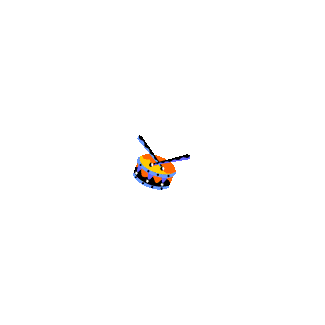 Turning
Turning  So what are the ways to make this miraculous change in habit? Do we have to turn ourselves inside out?
So what are the ways to make this miraculous change in habit? Do we have to turn ourselves inside out?



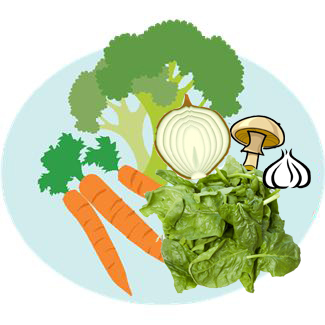 1)
1) 6)
6) 9)
9)
 There is much evidence that plant-based nutrition helps rid us of a variety of modern-day ailments. However, major “Western” food manufacturers downplay it. After all, what would happen to their food consumption if even 50% of the people who now eat meat/fish/fowl/dairy/eggs changed their ways?. What would manufacturers do if people in the United States stopped eating processed foods?
There is much evidence that plant-based nutrition helps rid us of a variety of modern-day ailments. However, major “Western” food manufacturers downplay it. After all, what would happen to their food consumption if even 50% of the people who now eat meat/fish/fowl/dairy/eggs changed their ways?. What would manufacturers do if people in the United States stopped eating processed foods?
 Let’s look at soda, including diet-soda. The highest source of calories of any food in the United States is soda. It is an acid-forming food along with diet soda, which has no calories but is in the same acid category. Both regular and diet soda contain phosphoric acid, all the way over on the acid side of acid-forming foods.
Let’s look at soda, including diet-soda. The highest source of calories of any food in the United States is soda. It is an acid-forming food along with diet soda, which has no calories but is in the same acid category. Both regular and diet soda contain phosphoric acid, all the way over on the acid side of acid-forming foods.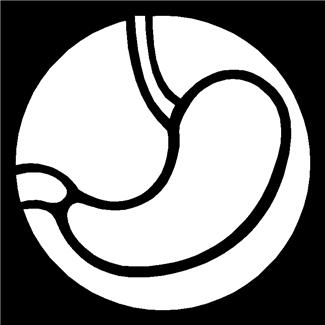 Did you know that saliva is alkaline and that if you chew more, you enable the digestive process? Many monks profess that we chew our food 50 times before swallowing. This will predigest the food and liquify it. It will provide a time for us to appreciate the food without rushing. Now, I know it will certainly combine well with alkaline saliva for body health.
Did you know that saliva is alkaline and that if you chew more, you enable the digestive process? Many monks profess that we chew our food 50 times before swallowing. This will predigest the food and liquify it. It will provide a time for us to appreciate the food without rushing. Now, I know it will certainly combine well with alkaline saliva for body health. Feel good, feel balanced. Consider eating plant-based nutrition for a proper pH level. Keep the body in the best position for losing weight, and learn which foods are alkaline and eat them.
Feel good, feel balanced. Consider eating plant-based nutrition for a proper pH level. Keep the body in the best position for losing weight, and learn which foods are alkaline and eat them.





